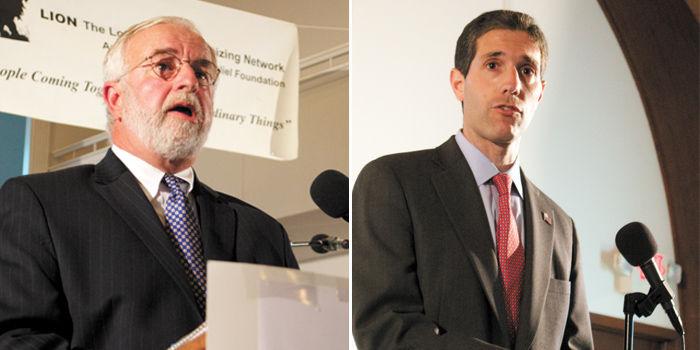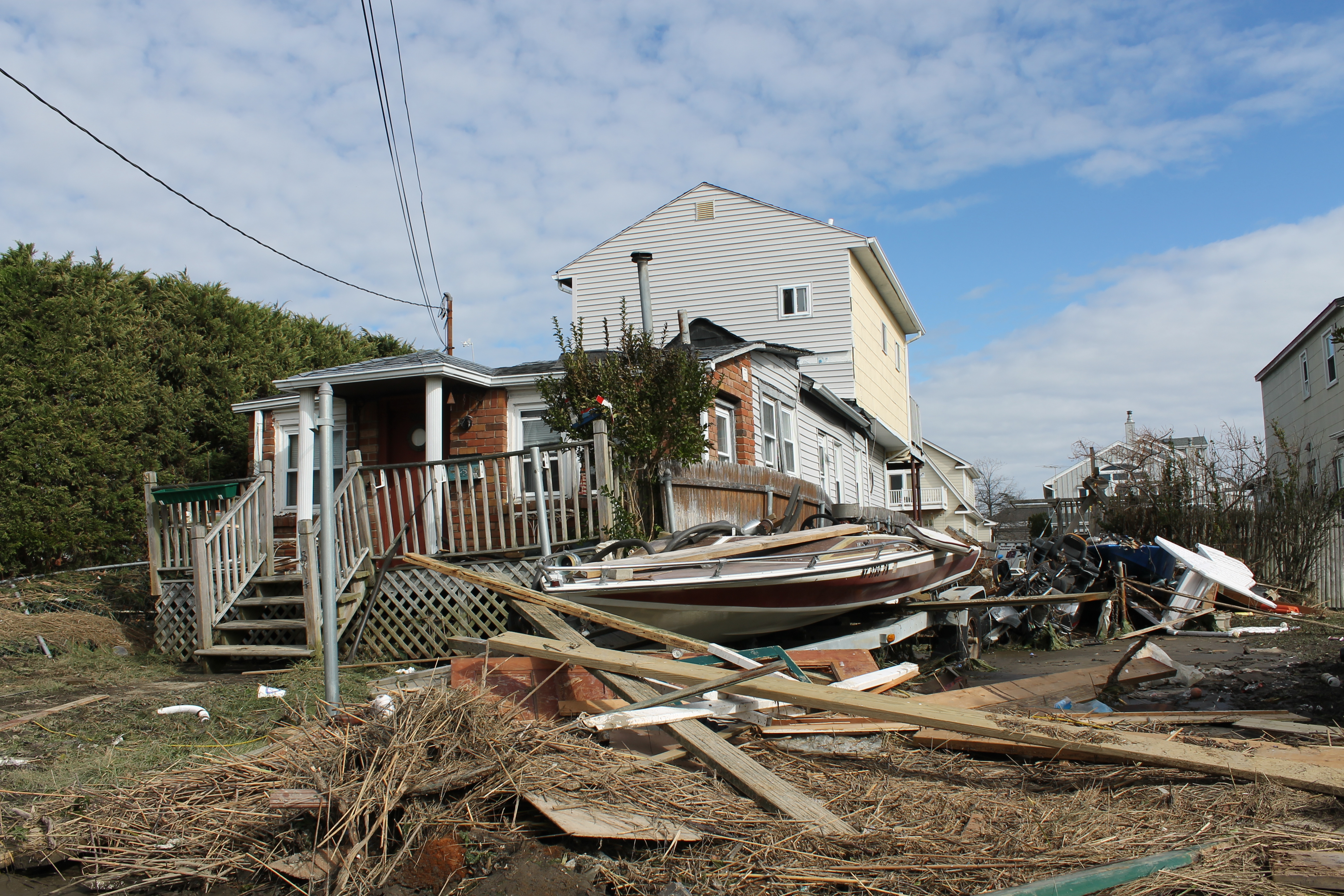

Senator Kirsten Gillibrand and Rep. Steve Israel push for Long Island Sound funding. (Photo credit: Rashed Mian/Long Island Press)
The Long Island Sound generates millions of dollars into the local economy annually, but renewed federal funding is needed to combat declining water quality and maintain the Sound’s lure, lawmakers and environmentalists said Friday.
Rep. Steve Israel (D-Dix Hills) and Sen. Kirsten Gillibrand (D-NY) hosted a roundtable discussion at the Sagamore Yacht Club in Oyster Bay where they urged passage of federal legislation that would provide $40 million annually into Long Island Sound restoration and $25 million for stewardship through 2016. Funding for those programs expired at the end of 2011, which environmentalists said puts the health of the Sound at risk.
“Obviously the Long Island Sound is a national treasure,” Gillibrand said. “And it’s something that is not only beautiful to enjoy for our families but it’s also an enormous economic engine generating billions of dollars of investments every year, so it’s fundamental to our economy and our community.”
Nearly a dozen local civic groups, environmental organizations and local officials were represented at the roundtable discussion inside the yacht club, which overlooks the sparkling body of water that separates Long Island and Connecticut.
“Anytime you get Democrats and Republicans to agree on a bill—pass it,” Israel said. He added the bill should have no problem passing because “protecting the Long Island Sound was a Republican idea,” referring to Theodore Roosevelt, whose summer home sits at nearby Sagamore Hill.
The Long Island Sound is a 1,320 square mile waterway with 8 million people living on its coast. Local fishermen also rely on the Sound to harvest shellfish to sell at local markets. It’s more than just a pretty sight on the North Shore.
Adrienne Esposito, executive director of Citizens Campaign for the Environment, said the funding is critical for research and to continue programs that stop polluted runoff from going into the Sound.
“It [funds] research to protect us from the toxic algae blooms so we’re not eating shellfish that’s contaminated,” Esposito said. “It also allows for funding to upgrade out sewage treatment plants, protecting public health.”
Dr. Chris Gobler of Stony Brook University’s Marine Science Center, said such algae blooms impacting the Sound accumulate in shellfish and, if ingested, can cause people to become ill. Those blooms are caused by pollutants.
“We discovered that they’re promoted by high levels of nitrogen that are coming from waste water—septic tanks and sewage treatment plants—so more funding is needed to upgrade those facilities so we can decrease the level of nitrogen entering our bays,” he said.
Environmentalists were hopeful that federal lawmakers—even in an election year—could compromise and get a deal done, despite partisan politics in Washington D.C.
“No matter where in the country you’re looking, there are important waterways and estuaries necessary for growing economies throughout the country,” Gillibrand said. “I think it’s something we can get done between now and the end of the year.”






